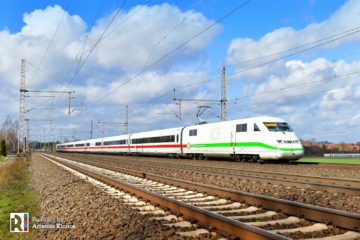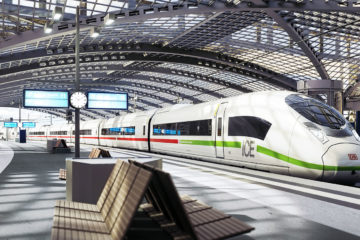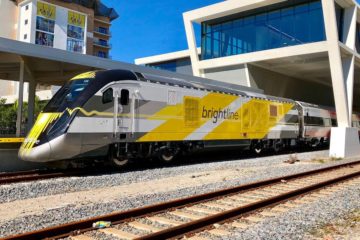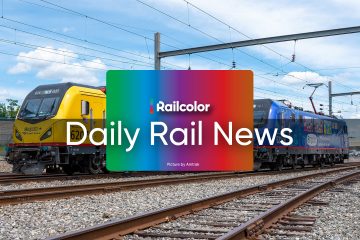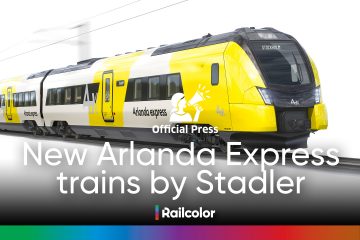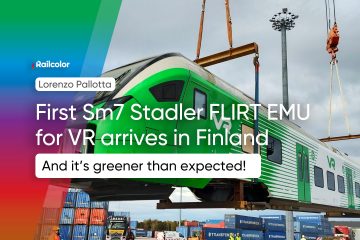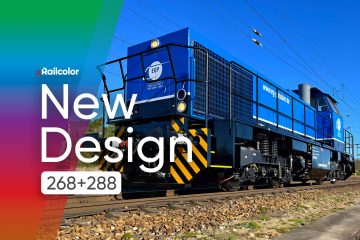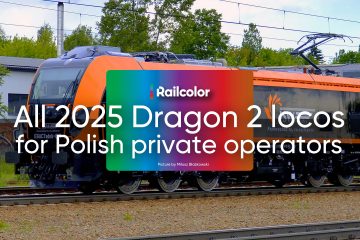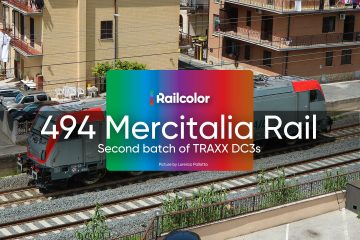Imagine a combination of high speed, flexibility in train compositions, full automation, individually powered cars and last-mile transport. The German Aerospace Center (Deutsches Zentrum für Luft- und Raumfahrt; DLR) has combined these features in its innovative and integral freight train concept, called: NGT CARGO.
With NGT CARGO, transport researchers at DLR aim to make rail freight more attractive than it is today, as its share in the overall transport volumes is not increasing. Despite widely supported policies to support a modal shift from road to rail, this shift does not happen or only to a very small extent. At the same time, freight traffic will continue to increase, in Germany alone by almost 40% until 2030.
“This makes it all the more important that we develop innovative logistics, production and vehicle concepts such as NGT CARGO, to exploit the societal, ecological and economic benefits of rail freight transport”, says DLR researcher Joachim Winter, who is leading the Next Generation Train (NGT) project.
The NGT CARGO concept is distinguished by a high level of automation, intelligent handling and high speeds. In this way, rail freight transportation can be made more flexible and the capacity of the system can be increased. The automatically driven NGT CARGO trains will be made up of single wagons and powerful end cars, automatically coupled together as required. This way, a vast range of goods can be transported flexibly, with low use of resources, minimal deployment of personnel and short transport times. As the transportation of small-scale shipments in particular will increase significantly in the future, the focus is on fast, reliable freight transport.
“Freight transport is currently dominated by block trains using a large number of wagons to carry large, standard volumes from A to B in fixed formations”, summarizes Winter. “This is because, until now, a very elaborate process using rigid operating procedures underlies single-wagon transport. Coupling and uncoupling, collecting and delivering wagons is time- and resource-intensive and accounts for 30-40% of the overall costs. The many manual coupling processes lead to long idle periods and an average system speed of just 18 km/h. A lead time of circa five days is needed to make the personnel, material and routes available.”
To make single-wagon transport fit for the future, the intelligent freight wagons of the NGT CARGO concept have a separate drive, combining electric motors with a battery that stores energy recovered during braking. This enables single wagons to shunt autonomously, without the need for shunting staff and locomotives or overhead power. Furthermore, the individual wagons can travel the last mile to the customer automatically and autonomously. Each single wagon has sensors enabling it to do so. This also enables customers and shippers to track their cargo at all times, based on details about current status and expected arrival time. The wagons can also be driven directly into ports, transshipment stations or logistics terminals, right up to the high level racks, where they are also then loaded or unloaded automatically.

For high-speed operations, the NGT CARGO wagons form a unit with one or two end cars to form a complete trainset. The end cars provide the necessary drive. With the appropriate infrastructure, up to 400 km/h is conceivable; on existing lines, speeds of up to 160 or 200 km/h. “An interesting application scenario for NGT CARGO would be intercontinental freight traffic between Europe and Asia, as an alternative to container ships that have long sea routes and that offer limited flexibility in terms of freight volume due to the size of the containers.
Multiple locomotives can be combined virtually during travel (called dynamic coupling). By doing so they form a block train, although they are not physically coupled to one another. Combination with the NGT HST high-speed passenger train is also possible. This way, DLR aims for an optimal use of line capacities through the combination of passenger and freight transportation.
DLR is currently developing a detailed logistics and operating concept, designing terminals and unloading sites and improving the vehicle architecture and drive concept. In contrast to the wagons currently in use, the NGT CARGO wagons will be enclosed and aerodynamically covered. There will be no gaps between the wagons, reducing wind resistance and generating less noise.



